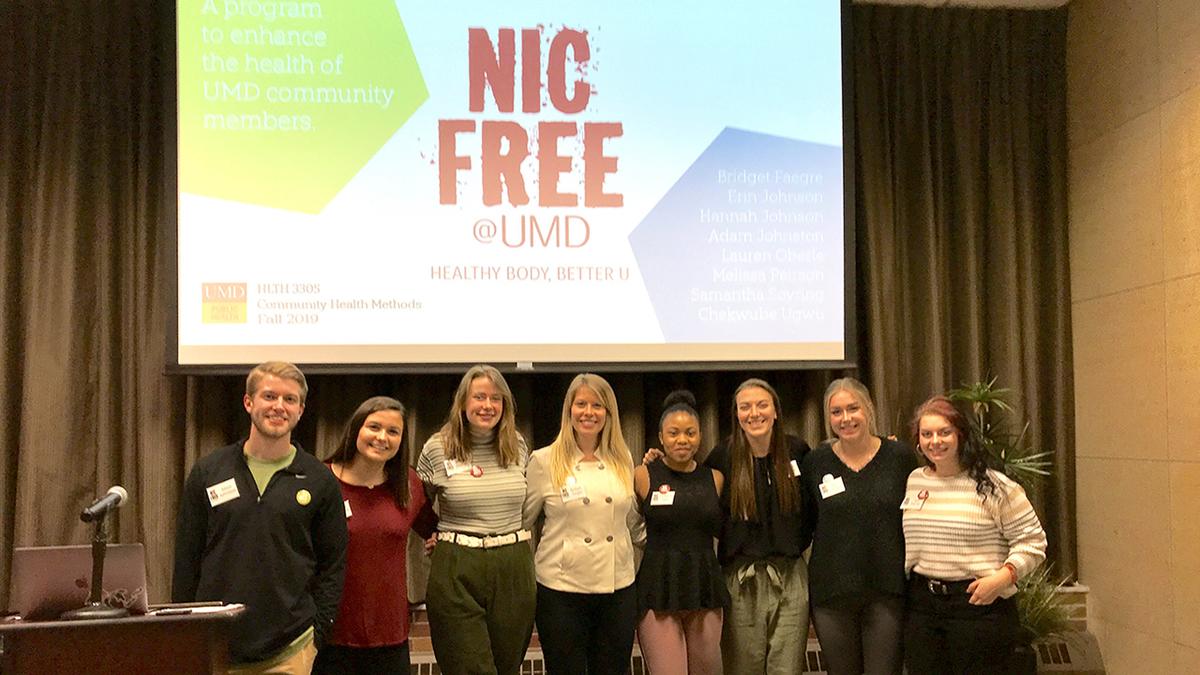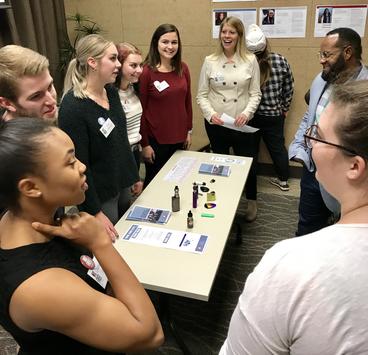The use of electronic cigarettes among young people has skyrocketed in recent years. A recent youth tobacco survey by the Centers for Disease Control and Prevention found that 1 in 4 U.S. high schoolers is vaping.
A rash of vaping-related deaths and lung injuries in 2019 gave rise to national concern and spurred some UMD Public Health students to take action. As part of their “Community Health Methods” class last fall, they tackled the issue of vaping and e-cigarettes within the campus community.
Amy Versnik Nowak, associate professor in the Department of Applied Human Sciences, designed the course, which gives students practical experience in addressing public health problems. “It builds skills and gives students a higher level of confidence through hands-on learning. The goal is that they’re prepared and ready to lead when they go into real-world settings,” Versnik Nowak says.
Peer Education
Class members surveyed their peers to better understand opinions about vaping and created a “Nic Free at UMD” educational campaign. UMD Public Health program alum Taylour Blakeman (‘18), now a health specialist at the American Lung Association, mentored students and helped them fine-tune their messaging.
Blakeman says she was impressed by the students’ comprehensive understanding of the issue, from the history of tobacco litigation to current health risks associated with vaping and emerging policies that seek to solve the problem. She points out the value of a campaign directed by young people.
“It’s so powerful because they see it firsthand. They know their friends are vaping and they want to find ways to help,” Blakeman says. “I’m really excited about the project and proud of their work.”
Senior Hannah Johnson was enrolled in the class and active in the semester-long project. For her, it was an eye-opening process. She also believes peers educating one another about the dangers of vaping can have a greater impact.
“If my mom is going to yell at me about vaping, naturally I’m going to rebel,” Johnson explains. “That's why it’s crucial for kids our age to be talking to each other about this—because we’re more likely to listen to each other; we can relate to each other on a different level.”
Community Impact
The public health students organized a campus-wide presentation to share what they learned. They addressed a number of misconceptions their peers have, including the idea that vaping is a safe alternative to smoking combustible cigarettes, a claim made by e-cig manufacturers.
Nic Free at UMD successfully attracted local news media attention. To continue the campaign’s momentum, Johnson will be interning during spring semester 2020 as part of a new joint effort between UMD Health Services and the UMD Public Health program.
Versnik Nowak notes that e-cig manufacturers have targeted young people with marketing and flavored vaping devices that resemble common objects, such as pens, whiteout, and flash drives, which can easily be hidden in a classroom or backpack.
She anticipates the collaboration will mean additional outreach to UMD students and youth in the greater community. “We’re building on what we did last semester now and trying to connect more in the community to see where we can help.”
Find out more about the UMD Public Health program, which is part of the Department of Applied Human Sciences, and Nic Free at UMD.

